ASUS VivoWatch BP: Function over form – SoyaCincau
No, it’s not a fitness tracker. It’s also not a smartwatch. ASUS‘ brand new VivoWatch BP is something else entirely — at least, according to the Taiwanese company. They’re calling it the world’s first “true health tracker” and it’s all because this wearable can do something very special: It can accurately collect blood pressure data.
The VivoWatch BP does look a little peculiar. It looks like the wearable is a little wider than it really should be but that’s for good reason. See that big white button-like thing on the front? That’s not a button, that’s an electrocardiography sensor (ECG) and it sits right above the optical photoplethysmography (PPG) sensor.
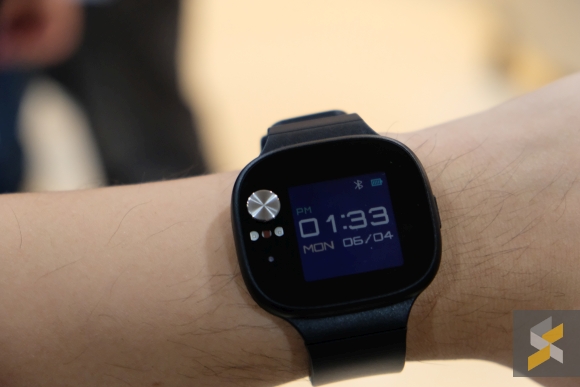
ASUS says that this is a medical-grade ECG sensor that can read your heart’s electrocardiography wave to provide “advanced and accurate blood pressure readings”.
If you’re wondering “why not just slap the sensors on the bottom like every other fitness tracker does?”, I did too. And the answer is that there is another set of ECG and PPG sensors at the bottom of the device too.
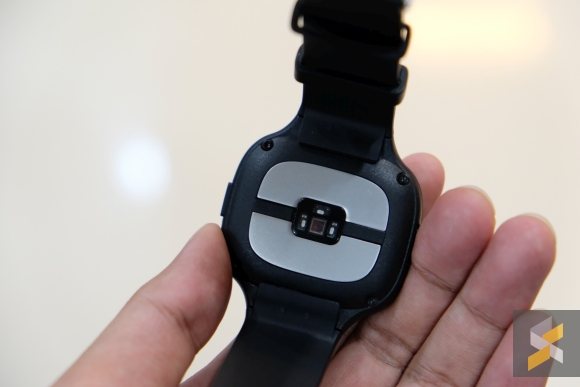
So, the idea is, you wear the watch on one hand, flick the VivoWatch BP into the measuring mode, and rest your finger (I used my index) on the two front sensors. ASUS says doing this forms a circle (because both arms are connected by the watch) and it’s the only way the VivoWatch BP can get an accurate reading.
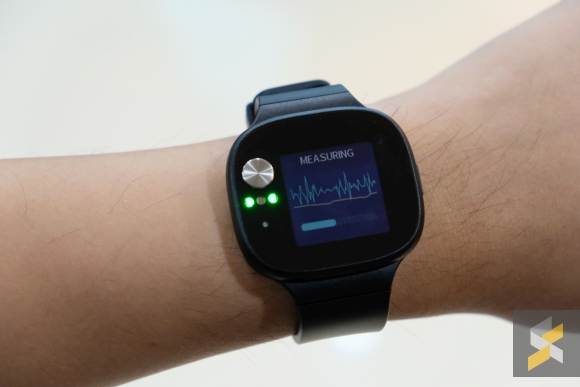
When your hands are connected to the watch, there will be a little graphic wiggling about on the screen while a bar fills up. In about 15 seconds, you’ll be presented with your blood pressure and heart rate.

Unfortunately, I can’t say how accurate these readings are because I didn’t have a proper blood pressure monitor with me, but I can tell you how the VivoWatch BP feels as a wearable on my wrist. For lack of a better word, the VivoWatch BP feels a little cheap.
But I don’t think it is a result of ASUS going out of their way to use inferior materials — no. I think it’s merely the result of a number of other — frankly, good — design choices made by the company. Well, that and the fact that the device’s retail price of USD169 (around RM672) is already pretty low by smart wearable standards.
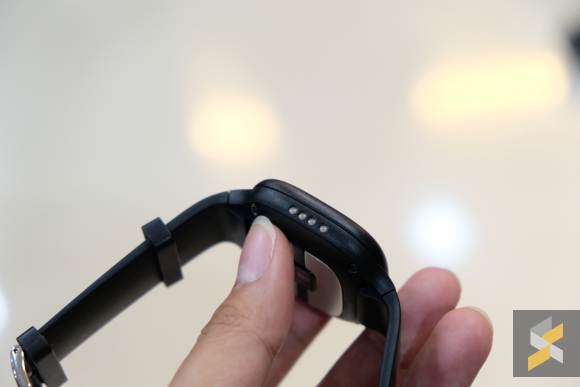
You see, the VivoWatch BP — despite it’s respectable screen size and host of other features like built-in GPS, activity tracking, sleep tracking and heart-rate monitoring — has a 28-day battery life. That’s really awesome by smart wearable standards, especially ones that have full displays.
However, to achieve that, the compromises had to be made and I think the biggest one that really adds to the less than premium feeling of this wearable is its screen. Instead of going for a regular OLED screen, ASUS installed a high reflective display.
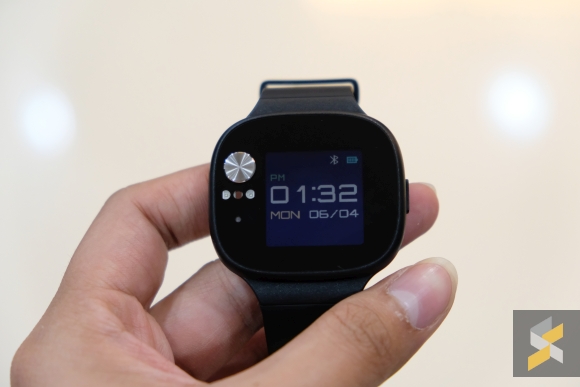
Because of this, you end up with a low-contrast, fairly dim, kinda pasty, not very vibrant screen that just can’t keep up with the brilliant OLEDs you’d find in something like a Samsung Gear Fit2 Pro. But it’s functional. According to ASUS, this screen consumes 97% less power than a regular OLED for wearable device. Also, despite its fairly dim appearance on first glance, you actually won’t have any problems viewing it under bright sunlight because it is highly reflective.
That means, the brighter your surroundings get, the brighter the elements on the screen will get because there’s more light to reflect. It works a lot like the display on the Moto 360 Sport I reviewed a while back and I loved that feature of the screen.
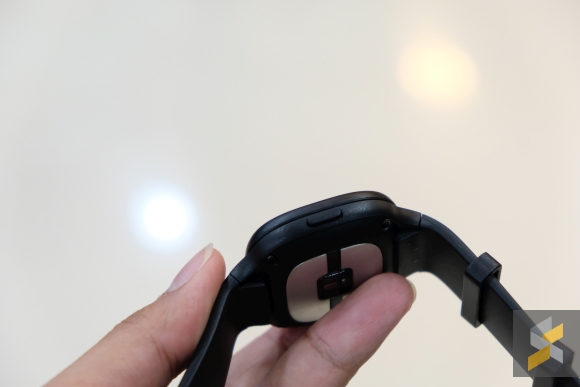
Another thing that doesnt make the VivoWatch BP feel like something expensive is its plasticky body but even here ASUS has managed to give the device IP67 water and dust resistance. Also, the watch is really light despite its size so I imagine you can comfortably wear it all day.
Oh, did I mention the VivoWatch BP uses standard 20mm straps? None of that proprietary bullshit so you should be able to use this with a variety of standard watch straps.
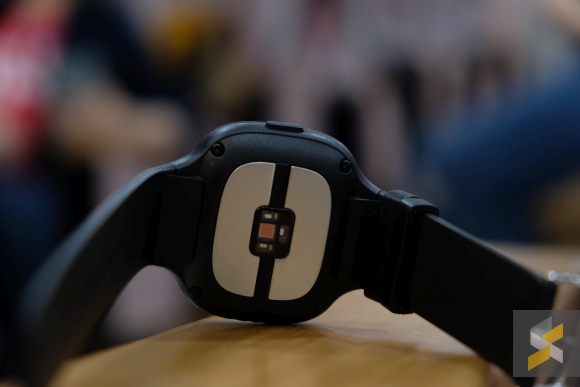
However, despite being so functional and being equipped with the fairly unique ability to monitor blood pressure, people might not end up buying a VivoWatch BP because of how it looks and feels.
Sure, I and everyone who has read this article knows how functionally capable this smart device is, but the general public probably won’t. Yeah, you could make a case that this watch doesn’t look particularly bad — although I personally think it’s closer to not pretty than pretty — it feels undeniably cheap.
And that screen, oh man, that screen. Yes, I love that you can see it easily no matter how bright it gets outdoors, but for the most part it just looks really old — and not in a good way like Pebble’s e-ink displays. I know my colleague Hanif will crucify me for this because I didn’t like the otherwise excellent bang-for-buck WeLoop Hey 3S for the same reason. But I just can’t — I need at least a decent-looking screen if I’m going to be looking at it all day.
Of course, if you can live with that, the VivoWatch BP looks like a solid choice for a fitness/health wearable, especially if they price it right. I, on the other hand, am still on the fence with this.
What do you guys think of the VivoWatch BP? Let me know in the comments below.






